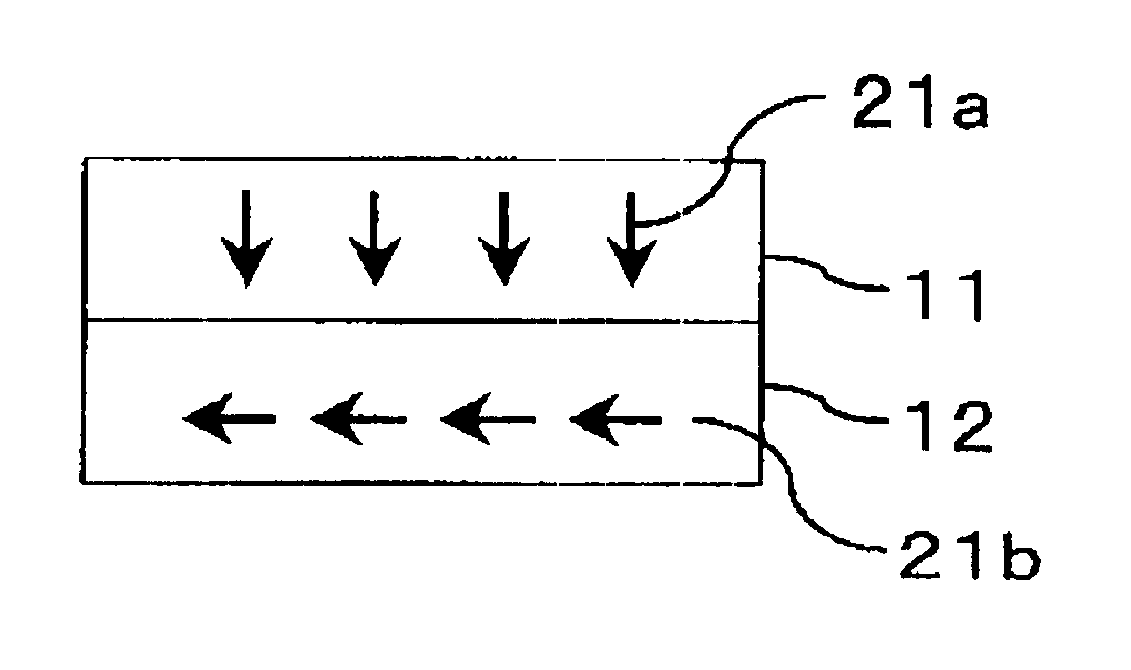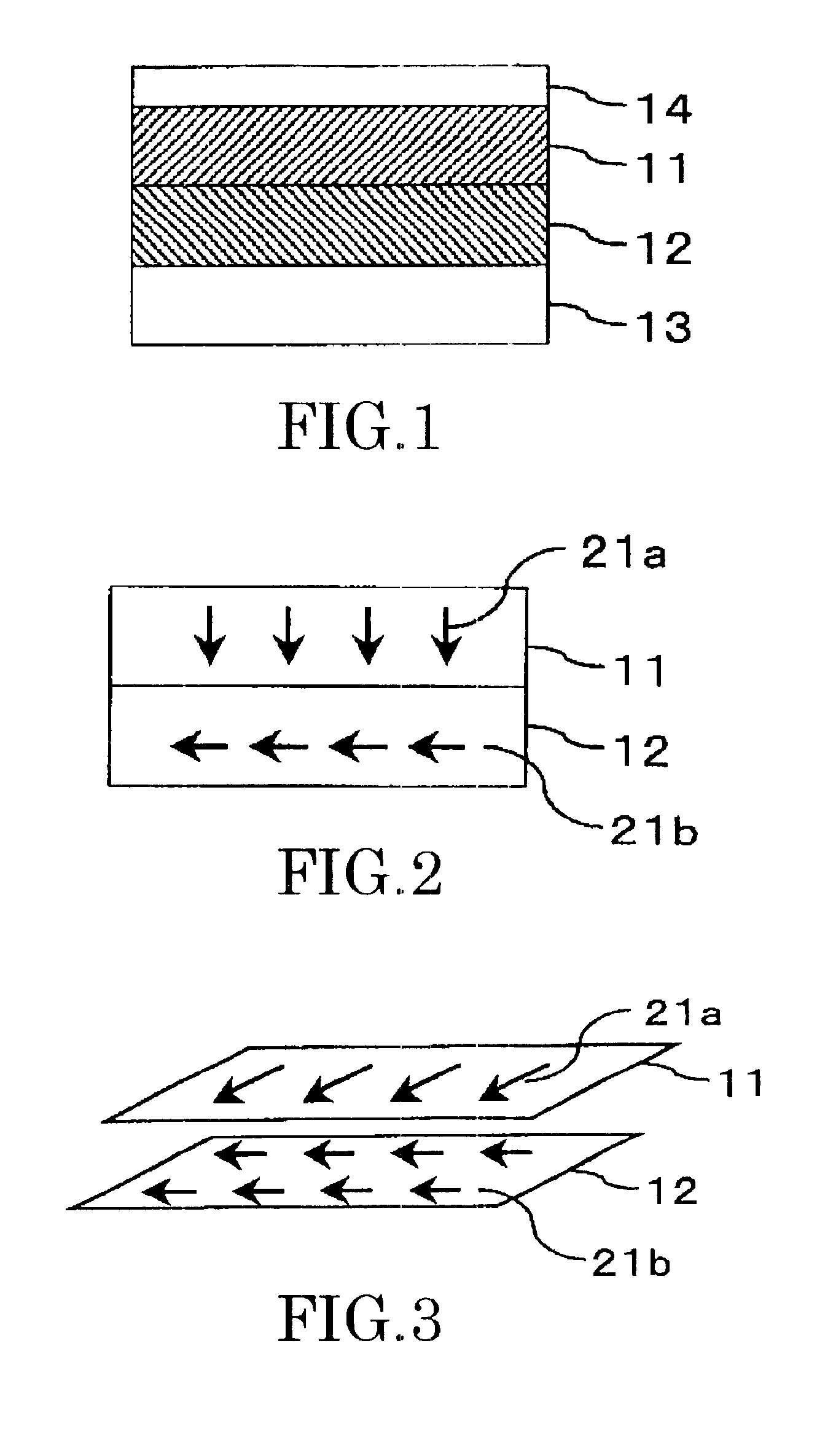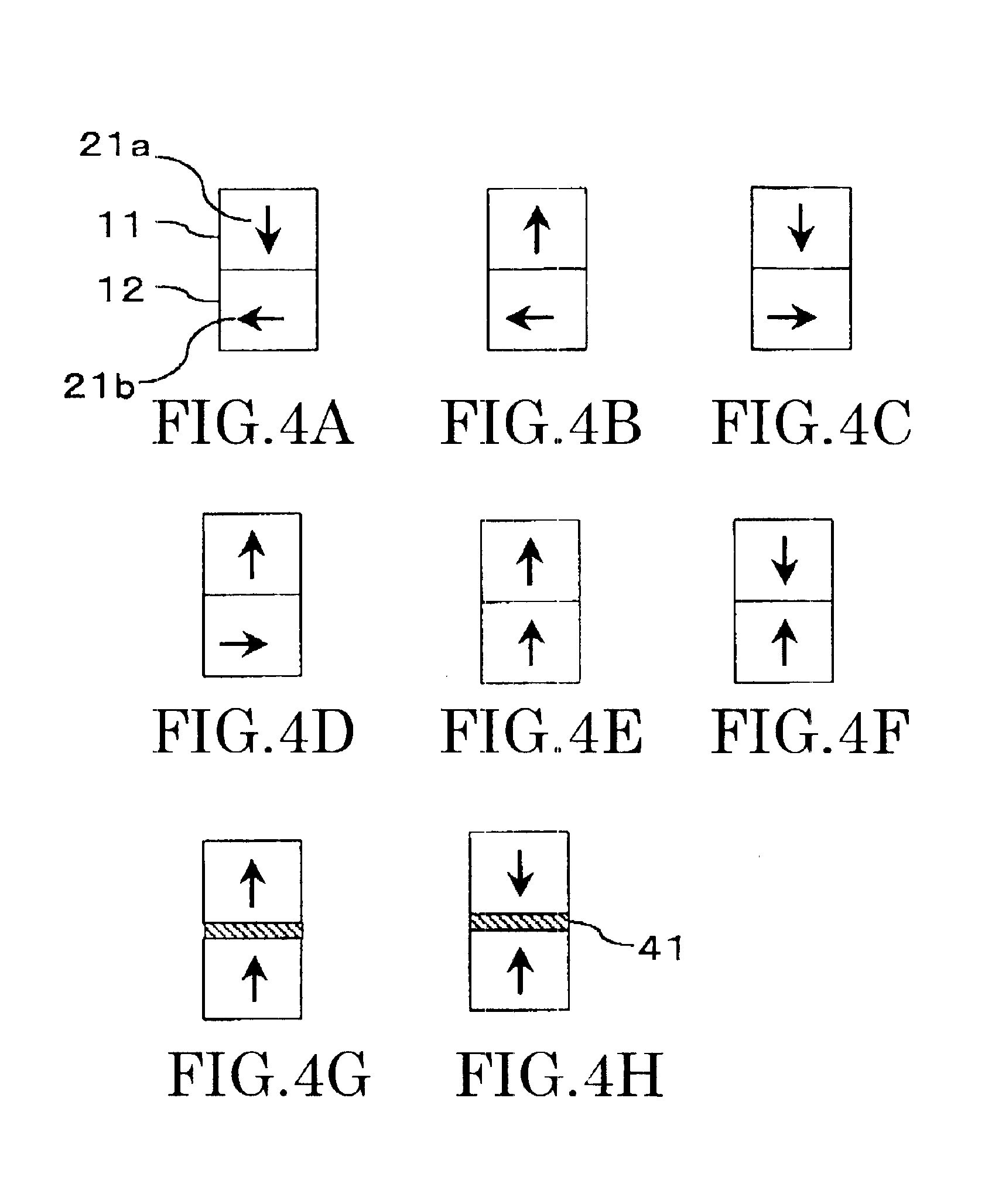Magnetic recording medium including functional and recording layers orthogonally exchange coupled
a recording layer and functional technology, applied in special recording techniques, maintaining head carrier alignment, instruments, etc., can solve the problems of inability to maintain the domain, inability to record magnetically, physical limitations, etc., to achieve the effect of increasing the effective volume of the magnetic reversal unit, reducing thermal fluctuations, and doubling the recording density
- Summary
- Abstract
- Description
- Claims
- Application Information
AI Technical Summary
Benefits of technology
Problems solved by technology
Method used
Image
Examples
first example
[0234]As the first example of the invention, detailed explanation is given below about an experiment for confirming the effect of preventing thermal fluctuation by orthogonal exchange coupling interaction in a structure including a spacer layer between the functional layer and the recording layer.
[0235]In this example, a magnetic recording medium having the cross-sectional structure shown in FIG. 8 was prepared.
[0236]More specifically, after depositing a 50 nm thick Pt under layer on a glass substrate (13) of 3.5 inches in diameter, and sequentially depositing thereon a 15 nm thick FePt—B functional layer (12), 0.4 nm thick Mn spacer layer (71), 15 nm thick CoPtCr recording layer (11) and 3 nm thick C protective layer (14), a lubricant was coated on the surface. Upon forming the FePt—B functional layer (12) the substrate was heated to approximately 400° C. As a result of this heating process, orientation of the magnetic anisotropy of the functional layer (12) stood up by 45 degrees ...
second example
[0253]As the second example of the invention, explanation will be next made about results of an experiment conducted by setting in-plane magnetic anisotropy to each of the functional layer and the recording layer by using two under layers.
[0254]In this example, a magnetic recording medium having the multi-layered structure shown in FIG. 1 was prepared. More specifically, on a NiP-plated Al disk substrate (13) of 3.5 inches, a 50 nm thick Ti first under layer, 30 nm thick NiAl second under layer, 10 nm thick CoCrPtTa functional layer (12), 10 nm thick CoCrPtTa recording layer (11) and 3 nm thick C protective layer (14) were sequentially deposited by sputtering, and a lubricant was coated thereafter. All layers were formed consecutively without breaking the vacuum.
[0255]Although a 0.2 nm thick Pt spacer layer was deposited between the functional layer (12) and the recording layer (11), existence of the Pt spacer layer could not confirmed by cross-sectional TEM probably because the Pt ...
third example
[0266]As the third example of the invention, explanation will be next made about results of trial preparation of a recording medium having a spacer layer between the functional layer and the recording layer and trial preparation of a magnetic recording apparatus having mounted the recording medium.
[0267]In this example, a magnetic recording medium having the cross-sectional structure shown in FIG. 8 was prepared. More specifically, on a NiP-plated Al disk substrate (13) of 3.5 inches, a 50 nm thick Ti first under layer, 30 nm thick NiAl second under layer, 10 nm thick CoCrPtTa functional layer (12), 1 nm thick Rh spacer layer (71), 10 nm thick CoCrPtTa recording layer (11) and 3 nm thick C protective layer (14) were sequentially deposited by sputtering, and a lubricant was coated thereafter.
[0268]Here again, all layers were formed consecutively without breaking the vacuum. However, before forming the under layers, the substrate was treated by texturing process to give anisotropy in ...
PUM
| Property | Measurement | Unit |
|---|---|---|
| thickness | aaaaa | aaaaa |
| thickness | aaaaa | aaaaa |
| thickness | aaaaa | aaaaa |
Abstract
Description
Claims
Application Information
 Login to View More
Login to View More - R&D
- Intellectual Property
- Life Sciences
- Materials
- Tech Scout
- Unparalleled Data Quality
- Higher Quality Content
- 60% Fewer Hallucinations
Browse by: Latest US Patents, China's latest patents, Technical Efficacy Thesaurus, Application Domain, Technology Topic, Popular Technical Reports.
© 2025 PatSnap. All rights reserved.Legal|Privacy policy|Modern Slavery Act Transparency Statement|Sitemap|About US| Contact US: help@patsnap.com



